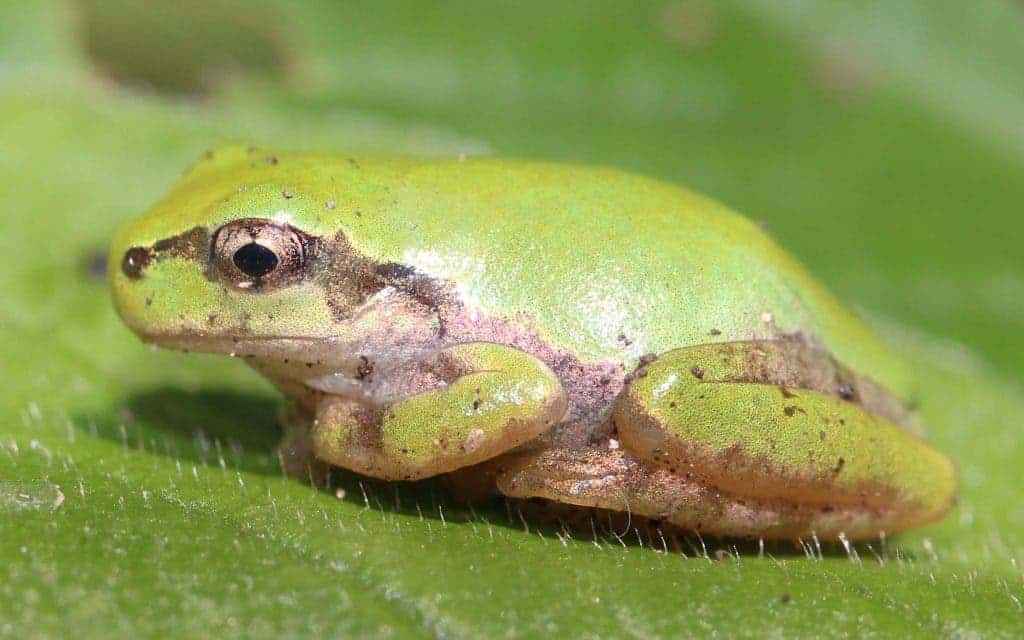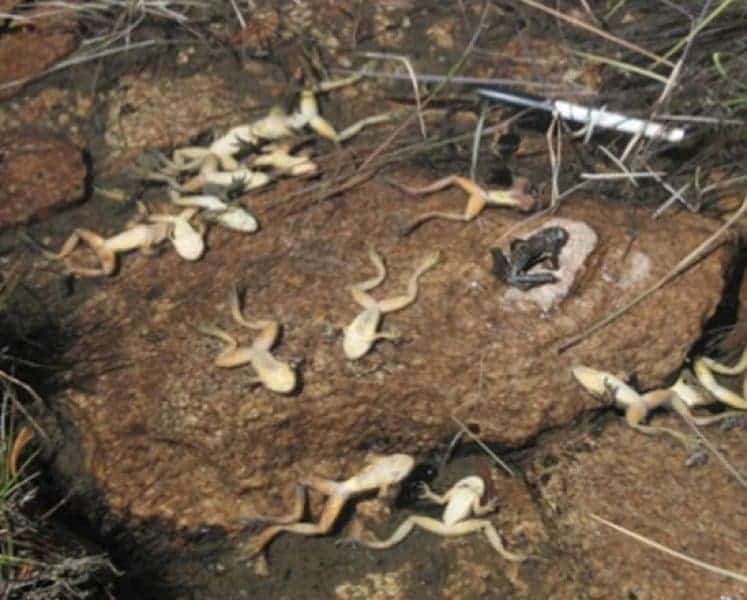A new study of Batrachochytrium dendrobatidis (Bd), a deadly fungus that affects amphibians worldwide, found that it spreads by making males’ mating calls more attractive to females. The pathogen alters the reproductive habits of different species of amphibians, explaining why frogs and related species continue to disappear across the globe.
“If true—that the fungus is manipulating individuals’ behaviors to facilitate its spread—then this is extraordinary,” says Michael Ryan, a herpetologist at the University of Texas, Austin, who was not involved in the study.

Image credits to wikimedia user Alpsdake
Bd causes a condition named chytridiomycosis or chytrid fungus disease, which destroys amphibians‘ skins, disrupts their immune systems and ultimately causes heart failure and death. It was first discovered in the 1990s when several species of frogs in Australia and Central and South America went through massive die-offs.
The extinction of hundreds of amphibian species in recent years has been attributed to Bd, and it could potentially affect one third of the amphibian species currently on the planet. While there is no known cure for the fungus, a few species of frogs are known to survive several years after infection — indicating a certain level of adaptation towards fighting it.
But as Bd has been relatively contained up to now and species are being exposed to it for the first time, usually there is little natural defense against the fungus.
“Some people think that amphibian populations are declining primarily due to catastrophic die-offs caused by Bd,” says Bruce Waldman.
“But the story is much more complicated than that.”

Image via sciencedaily
Waldman and his student Deuknam An studied Japanese tree frogs (Hyla japonica) in the wild to find out how Bd affects species seemingly resistant to it. This amphibian, which inhabits area in central Asia, Korea and Japan, hasn’t been experiencing the massive die-offs associated with the pathogen even though individuals are getting infected.
The team studied and recorded the mating calls of 42 male Japanese tree frogs from June to mid-August 2011 (during the mating season) in the rice paddies of South Korea. Here’s a recording of a normal call:
They looked for things such as the number of pulses per note, repetition rate of pulses, number of notes or total duration of the call. Out of this sample, nine frogs tested positive for Bd. These were slightly larger than their uninfected counterparts (40.17mm on average compared to 39.24mm.)
The team also reported that these males became lethargic, but put more effort into their calls compared to the others– for example, they produced longer songs, a trait which females are known to prefer. Here’s a recording of a Bd-infected male:
If you were a female Japanese frog, your lady-frog-parts would be on fire right now.
“Therefore one would expect the amount of calling to be lower in infected males,” Ryan notes.
“But this is not what the study found—and that’s very surprising.”
This suggests, he adds, that Bd can act like a parasite and turn its host into a zombie. These zombie males then go on to spread Bd further in the population by using their fungus-fueled sex appeal: the females they mate with become infected too, and their offspring inherit the fathers’ susceptibility to chytrid fungus disease.
The team hasn’t been able to figure out how Bd changes the host’s behavior, but they to have a theory. They point out that the force of natural selection may be looming over these males, which put an extra effort into their calls in order to reproduce faster as a way to compensate for their shorter lifespans.
But the end result is that while the infected males certainly get more action, the population as a whole is severely harmed.
“Bd has an impact on frog populations even when we don’t see outbreaks of chytridiomycosis,” says Cori Richards-Zawacki, a behavioral ecologist at the University of Pittsburgh in Pennsylvania.
Richards-Zawacki recently found that the disease causes male leopard frogs in the lab to up their reproductive efforts. Although it might seem that a species has adapted to Bd and shows no clinical signs of the disease, she says, “in reality it’s still stressed by the infection, which is likely to take a less dramatic but still important toll on the population over time.”
Waldman says that these “sublethal” effects can kill off a species even if it survives the initial die-off from the pathogen.
“Some of these populations that were hard hit are coming back, but slowly. Their populations are small, and that leaves them vulnerable to other random catastrophic events that might lead to extinction.”
The scientists looked at only one frog species—and only one of its life history stages, Waldman also notes.
“It shows that Bd continues to be an enigma.”






